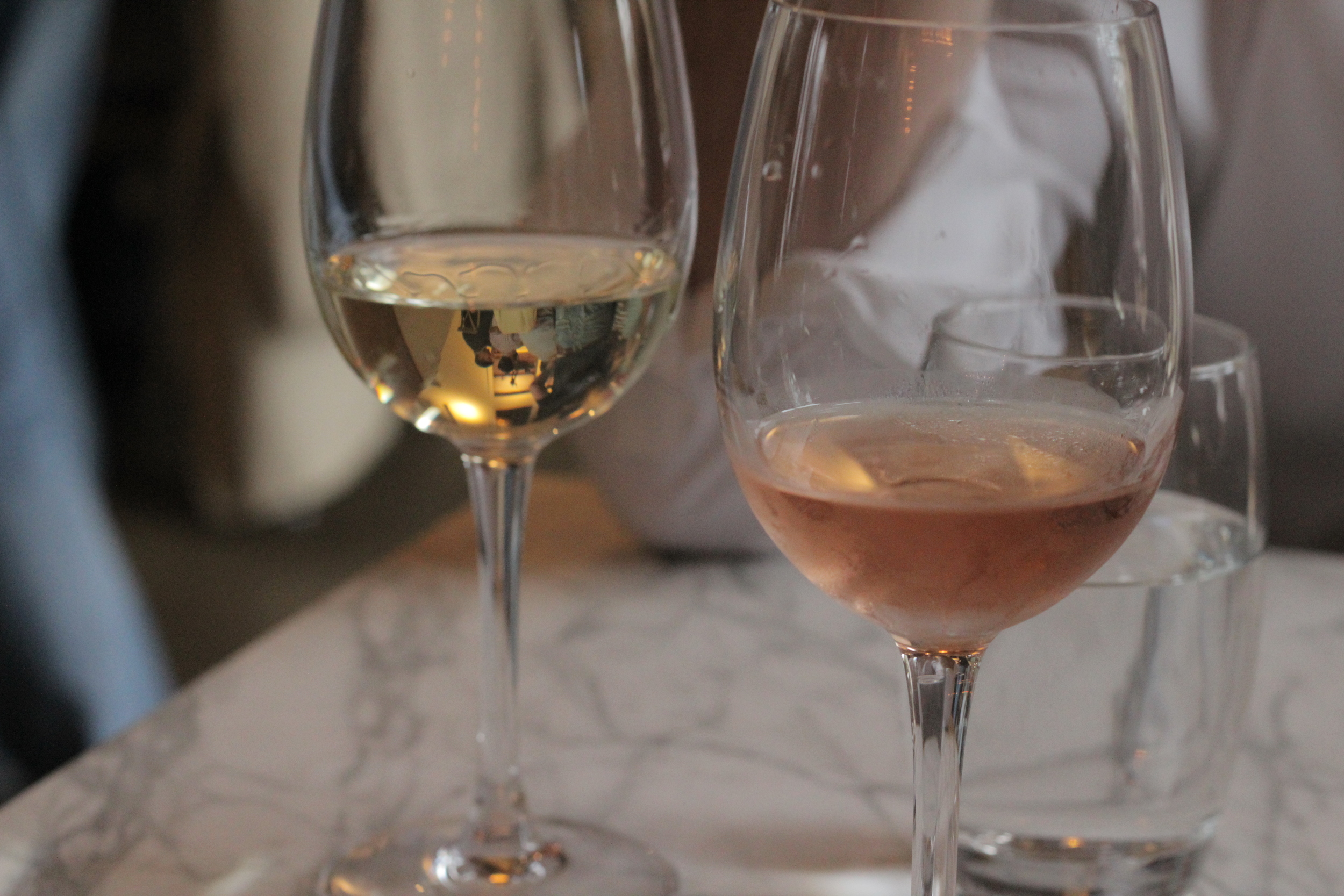It’s hard to walk into your local wine shop or supermarket and not notice the stunning rows of jewel-hued rosés. And considering the boom in popularity that rosé has enjoyed the past several years, there’s a strong chance that these beauties ranging in color from the palest of pinks to outrageous magentas will be featured prominently. As we explored in a recent blog post, rosé has gone from being just another wine to a cultural phenomenon in a few short years. However, most people, even the most ardent fans, have little idea of rosé’s fascinating journey from grape to glass.
While researching this article, I was fortunate to speak with two winemakers very knowledgeable about rosé production, Chelsea Franchi of Tablas Creek Vineyard in Paso Robles, CA and Simon Batarseh of August Kesseler in the Rheingau region of Germany.
It is a common misconception that rosé is made by simply combining red and white wines together. While this technically can occur, it is quite rare when making quality rosé. Franchi, who oversees much of the rosé production at Tablas Creek, started our conversation speaking about the two most common methods of producing rosé: saignée and direct press.
The saignée method involves bleeding off juice from red wine tanks before it has had a chance to take on too much color from the red wine skins (this process is called maceration). This labor-intensive method is interesting and controversial because it is often used as a way to enhance and concentrate the remaining red wine. Many rosé advocates consider it an affront to rosé because it is the by-product of red wine production. However, both Franchi and Batarseh praised this method for contributing intensity of flavors and for the amount of input they have while utilizing it. At Tablas Creek, the juice sits on the skins for approximately 24-72 hours before about 20% is bled off and subjected to a cold fermention. Most of this wine then becomes their serious, darker colored rosé called Dianthus (named for the flowers commonly known as “pinks”). Dianthus is generally Mourvèdre-based, a nod to the rosés of Southern France, specifically the Bandol area. Franchi attributes this wine’s watermelon essence to the Mourvèdre used in the blend. At Kesseler about 20% of the juice from wonderful up to 80-year-old Pinot Noir vines is bled off then fermented. Batarseh leans on this wine to contribute color and tannins to the final blend.
The other common method of making rosé involves direct pressing of the grapes. This method is the most common and generally is considered the benchmark for crafting quality rosé. Both Franchi and Batarseh praised the fact that crop levels, sugar levels, acidities, and harvest dates can all be controlled in the vineyard and tailored to make the absolute best rosé. They both also press the juice off the grape skins without any maceration time resulting in a stunning pale pink color. Often you will see this wine labeled as vin gris. At Tablas Creek, this limpid direct press juice is destined to become their acclaimed Patelin de Tablas Rosé. Franchi said that they prefer to co-ferment their Grenache, Mourvedre, Counoise, and Syrah juice for this wine. This wine is definitely styled in the tradition of the great Provençal rosés with its dominant bright strawberry notes coming from the majority Grenache. At Kesseler the direct press juice is blended with the saignée juice for the final wine. Batarseh likes the interplay of qualities produced by using both methods, noting that the direct press juice brings a light, bright, acid-driven quality to the final wine.
via Wine Folly (www.winefolly.com)
I asked Franchi what her favorite grape is to work with in the production of rosé. After some thought she answered, “Grenache,” and referenced the absolutely heavenly, heady aroma released by the vats of fermenting Grenache in the cellar. Indeed, when studying many of the great rosé-producing areas of the world, Grenache often seems to pop up. It makes sense when considering that Grenache is a very thin-skinned grape and overall has less color-lending phenolic compounds than other red grapes. Franchi also referenced the little-known Rhone Valley grape Counoise as contributing a nice softness and darker red fruit flavors to their rosés as well as those produced in Southern France. Often Syrah is also added also its wonderful spicy character.
Grenache Grapes
At Kesseler, Batarseh works exclusively with Pinot Noir for rosé production. Once again we find a grape with thin skin and low levels of phenolic compounds. It’s no surprise that in most of the world’s great Pinot Noir regions there is also usually concurrent rosé production (think Marsannay in Burgundy, Oregon, Germany, and the Loire Valley). Producers in these regions get the dual benefits of producing a gorgeous berry-scented rosé and intensifying the often light juice destined for their Pinot Noir bottlings. At Kesseler, considered one of Germany’s premier Pinot Noir specialists, their rosé shows beautiful berry and cherry notes while maintaining an elegant and exciting tension. It’s definitely refreshing but has the stuffing for year-round drinking.
Pinot Noir
Next time you’re buying a bottle of rosé for the lunch table, pool, or just a summer evening with friends, talk with the wine specialist or turn that bottle over and read the back label. Besides the important visual clues from the color, you’ll gain some great perspective on what’s in a bottle by simply knowing how it’s made. And don’t be embarrassed for buying it!
As Franchi told me, “The stigma is over. Rosé is one of the most delicious, versatile, and food friendly wines out there.” Think pink!!


![Kesseler_Take4_18286_0003-200x300[1].jpg](https://images.squarespace-cdn.com/content/v1/571fd30862cd94c301db501e/1490966821896-C89T3F5QSBL4AVLEUK2L/Kesseler_Take4_18286_0003-200x300%5B1%5D.jpg)











































































































































































